

Featured Article of the Month
The Ikebana Encounter
By Ms Angela Kek
|
The Ikebana Art is the art of Japanese flower arrangement and it is one of Japan’s National Cultures. Based on records, the Art was commonly practiced since nearly 600 years ago, and the Ikenobo School of thoughts is frequently identified as the origin of Ikebana.
The history of the Japanese Ikebana goes back to a temple founded by Prince Shotoku about 1400 years ago, where temple priests would present floral offerings at the Buddhist altar. These priests were living near a pond (ike), in a small hut (bo), and for this reason people began calling the priests by the name Ikenobo. |
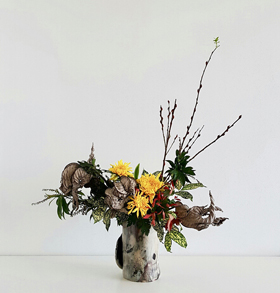 |
|
To date, there are more than 2000 Ikebana Schools registered in Japan, and maybe more than 200 over being active, while probably less than 50 schools are extended or represented outside of Japan.
Here in Singapore, we can find presence of a few schools such as Ikenobo, Sogetsu, Ohara, Ichiyo, Ryusei-ha, Souami Ryu, and so forth. Each is known for its own distinct styles and focus, despite being derived from similar fundamentals. I am sure besides myself, there are many who have low resistance to the charm of nature. We can bring this experience indoors by creating an Ikebana in the house. |
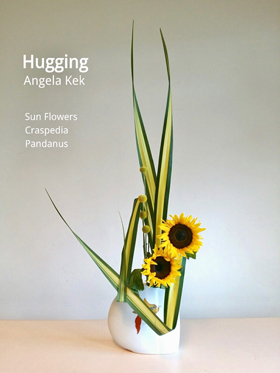 |
| Ikebana can be quite different from other forms of floral arrangements. It can offer a subtle awakening to the senses with the use of few or sometimes limited materials. To create an Ikebana arrangement, understanding the materials, becoming one with the materials, and the creation process is a special relationship. One has to adapt to the given form of the materials and to bring out its optimal aesthetics to be admired, just as we adapt in our daily lives, do the best we can given the constant changes we face, and be uniquely who we are. There have been practitioners moved to tears, simply out of admiration for the materials. | 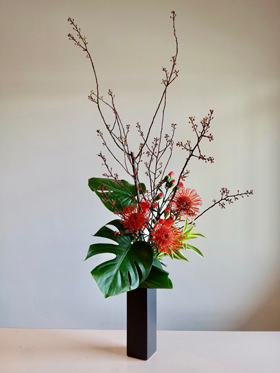 |
|
My journey began as a hobbyist who chanced upon the opportunity to attend lessons near where I lived. Ikebana has always been an art form I was curious and fascinated about, and it did not take long before I made the adjustments in my routine to sign up for classes.
I was content and enjoying the weekly therapeutic sessions for a few years, but became more serious about learning the art after a magical trip to Japan, and an accidental meeting with a lady in Ogaki town, Gifu Prefecture. I stopped by a wagashi store for some sweets and a cup of hot green tea. Little did I expect, this visit turned out to be the highlight and drastically changed my approach in learning the Ikebana Art. The shop lady spoke only Japanese and we could hardly communicate except using lots of movements to supplement. She showed me around her shop and her calligraphy works amongst Ikebana arrangements that were placed at different corners. |
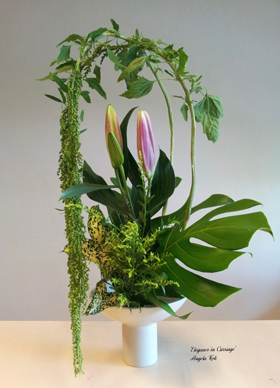 |
|
I was truly impressed and enjoyed our long conversation before we parted ways. I felt very strongly that it was predetermined that I was in Ogaki town to meet her. I initially wanted to do a Tarai (Bath Tub) Boat River Cruise and view the blooming sakura along the river, only to find out that the programme was postponed because the flowers did not bloom on schedule.
The visit to the wagashi shop had me hooked on Japanese sweets and gave me new insights on my learning journey. I became more appreciative of the opportunity to have met my sensei and to practice the Ikebana Art. This became one of the main reasons why I later began pursuing it academically. |
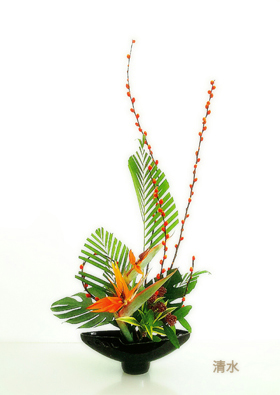 |
|
There are not many professional competitions in the field of practicing Ikebana art. I like to think that it is a sharing of an art form of the arranger, and a reflection of his or her state of mind at that point of time. Just like the materials chosen for the arrangement, together with the chosen vessel, it is an expression of a state at that point of time, something that cannot be compared or substituted.
In Friendship through Flowers, Angela |
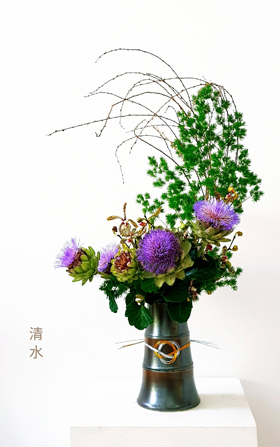 |
About the Author
|
Ms Angela Kek has a Second Jonin Sanyo Teacher qualification with Sogetsu School of Ikebana, and is presently the President for Ikebana International Singapore Chapter 135, a non-profit organisation supported by volunteers.
* All photos used in this article are provided by the author / © Ms Angela Kek unless otherwise stated |
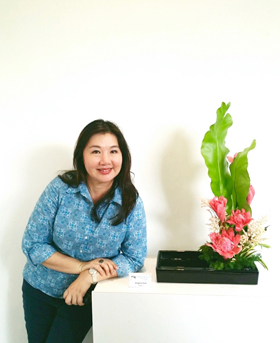 |
|
Japan Creative Centre 4 Nassim Road, Singapore 258372 +65 6737 0434 / jcc@sn.mofa.go.jp http://www.sg.emb-japan.go.jp/JCC Nearest parking at Orchard Hotel & Delphi Orchard |
 |